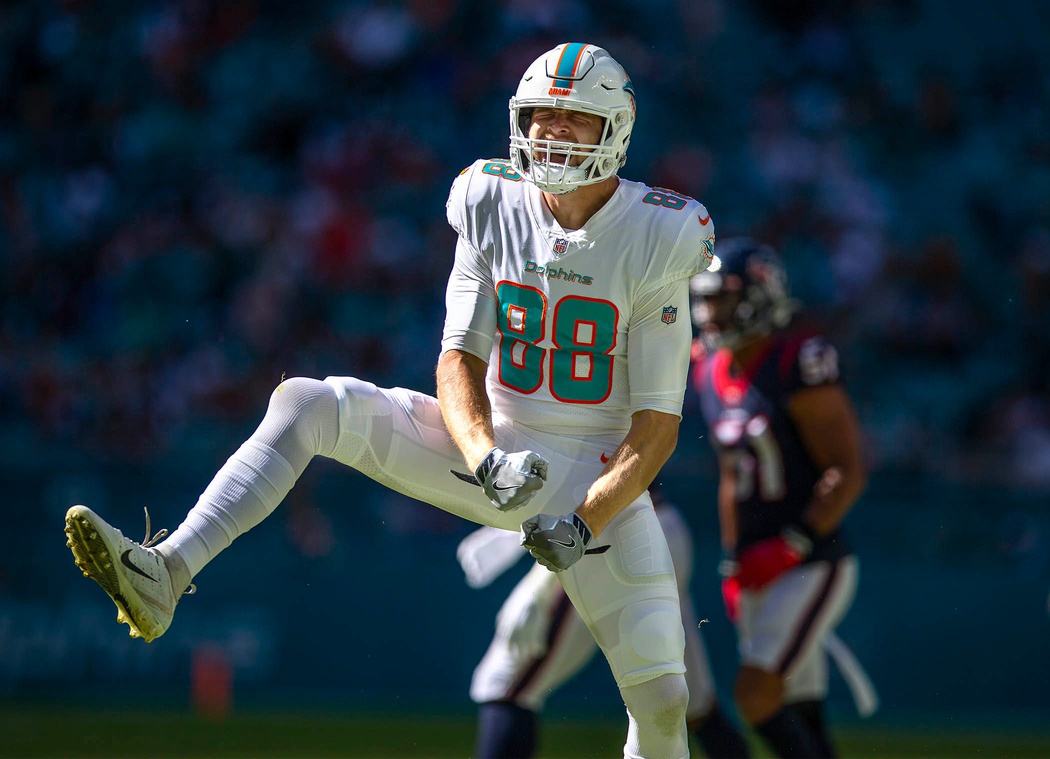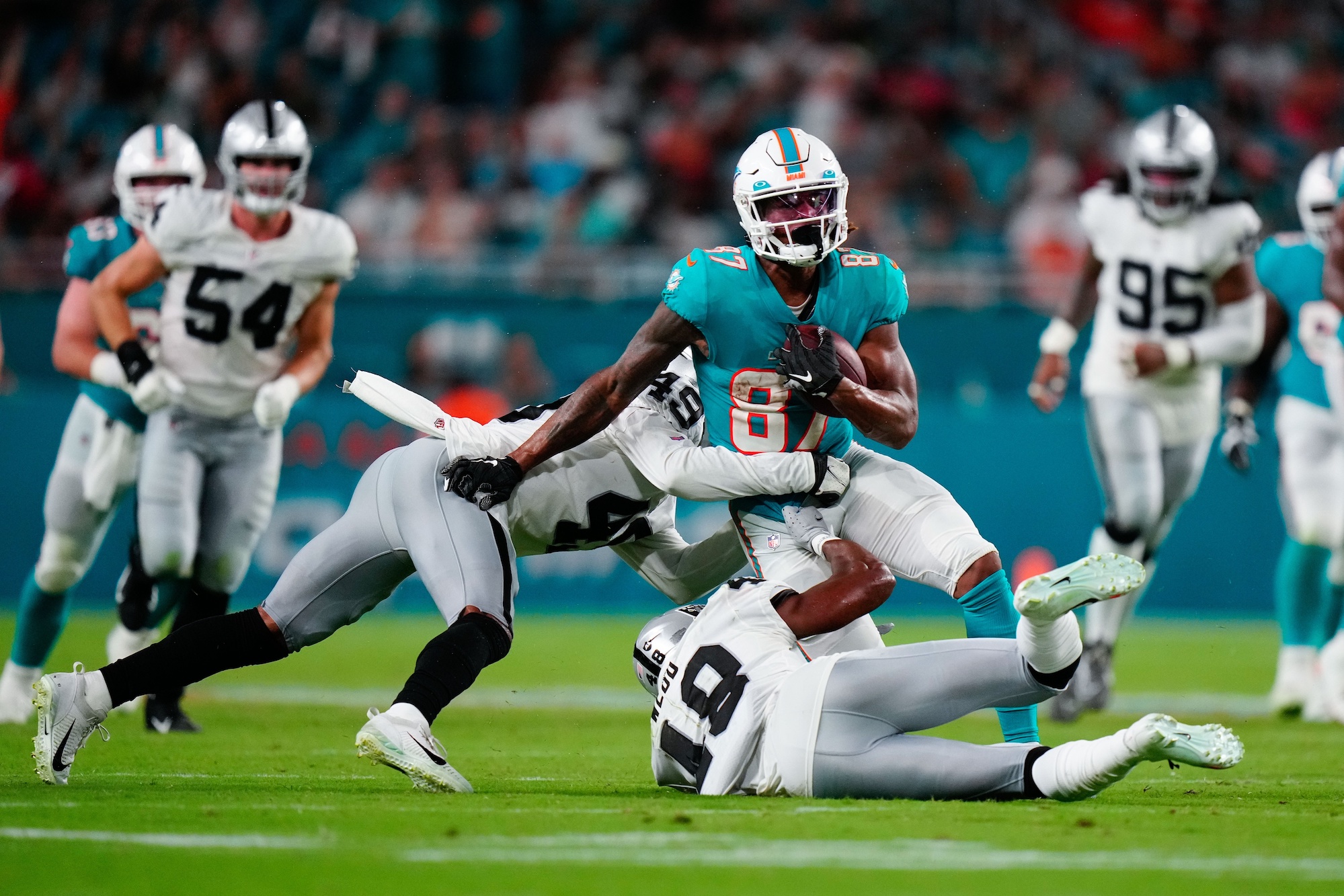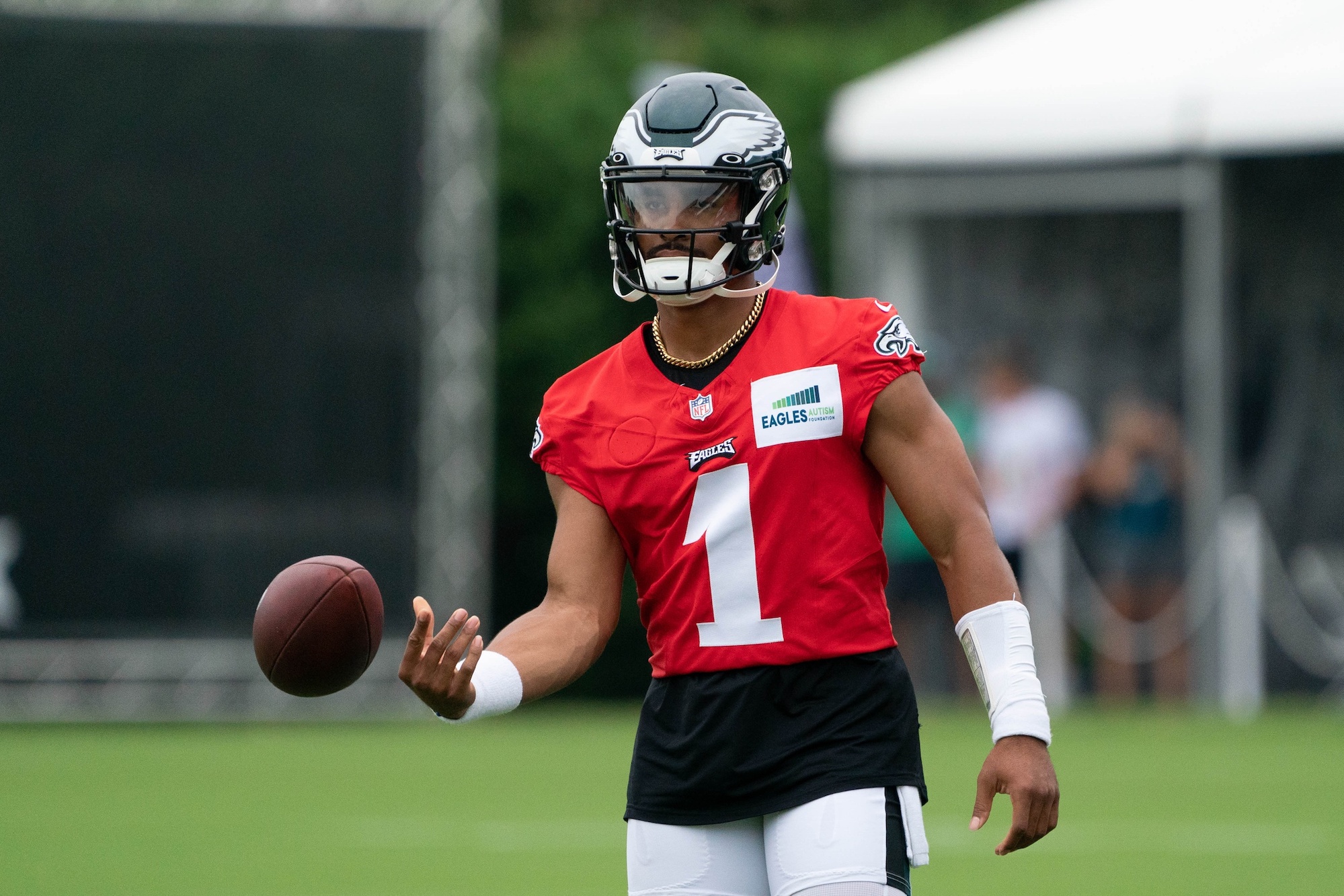The Miami Dolphins can boast quite the string of offensive struggles over their recent history. They extend well beyond the last three years of a Brian Flores-coached football team that seemed to struggle to ever find their groove with the ball, too—Miami has not posted a top-10 scoring offense since 2001 and has not logged a top-10 offense in yards since 1995, Don Shula’s final season as the team’s coach. But even aside from a lack of elite offenses, Miami has been lucky to claim “good” ones or “above average” ones at that. The Dolphins’ 404 points scored in 2020 was just the fourth occasion in franchise history in which the team surpassed 400 points and the first since 1986.
Which seemingly makes the decision that looms for tight end Mike Gesicki relatively straightforward, no?
On an offense that doesn’t lay claim to a lot of success and desperately needs continued investments to get right, Gesicki is one of the few standout players who has been capable of pulling his weight (and then some) for the Dolphins over the last three seasons. And with a new, offensive-minded coach now in the fray via the team’s new hire of Mike McDaniel from San Francisco, one would seemingly be ready to assume that Gesicki, who is an expiring contract and set to hit free agency, is at or near the top of the team’s offseason priorities.
The former Penn State product struggled greatly as a rookie in 2018 when Adam Gase felt it was appropriate to use the flex tight end in pass protection for one of every five snaps the rookie took that season. The three years since? Steady growth in production and a clear ability to make impact plays in the passing game.
- 2019: 51 receptions, 570 yards, 5 touchdowns
- 2020: 53 receptions, 703 yards, 6 touchdowns
- 2021: 73 receptions, 780 yards, 2 touchdowns
- 2019: 461 snaps in the slot (66%), 78 snaps aligned outside (11%), 159 snaps in-line (23%)
- 2020: 365 snaps in the slot (59%), 133 snaps aligned outside (21%), 122 snaps in-line (20%)
- 2021: 453 snaps in the slot (56%), 252 snaps aligned outside (31%), 99 snaps in-line (13%)
- 2019: 2.6 yards of separation (26th out of 32 qualifying tight ends)
- 2020: 2.0 yards of separation (34th out of 34 qualifying tight ends, third-worst among all pass-catchers)
- 2021: 2.8 yards of separation (25th out of 29 qualifying tight ends)
- Goedert: 193 receptions, 2,295 yards, 16 touchdowns
- Gesicki: 199 receptions, 2,255 yards, 13 touchdowns
- 2011: 48% of snaps in-line, 52% of snaps detached
- 2012: 28% of snaps in-line, 72% of snaps detached
- 2013: 43% of snaps in-line, 57% of snaps detached
Filed In
Related Articles
NFL
Erik Ezukanma Looks Like Future Gem For Dolphins
- Aug 22, 2022
NFL
5 NFL QBs Set Up For Better Success In 2022
- Aug 12, 2022
Written By



































